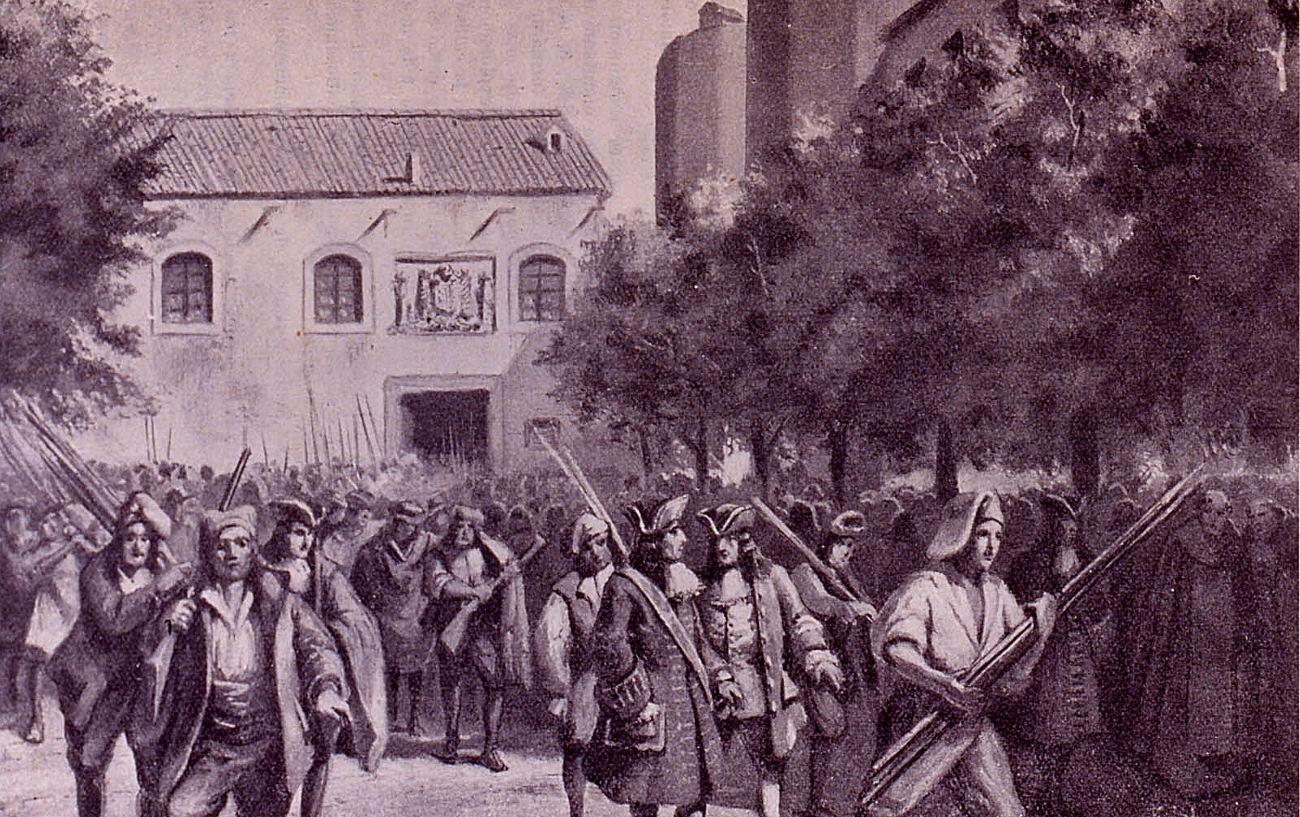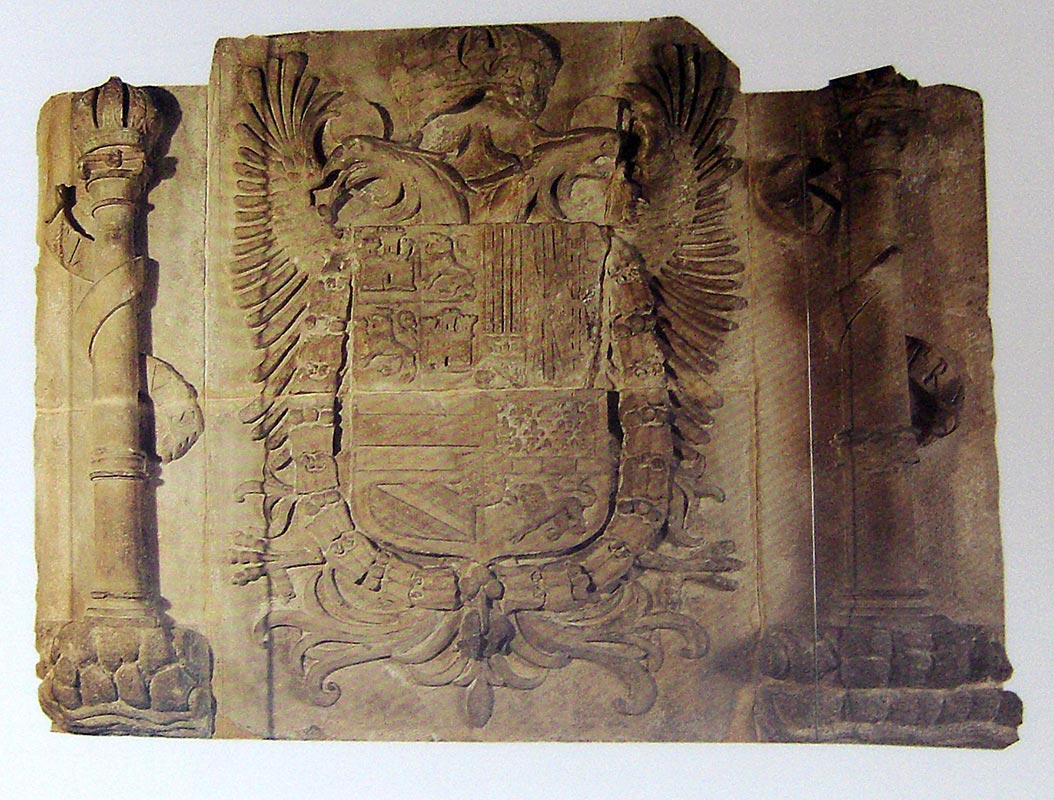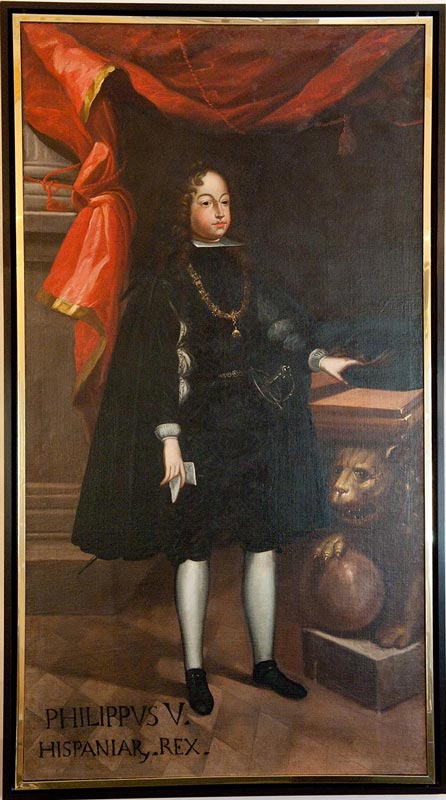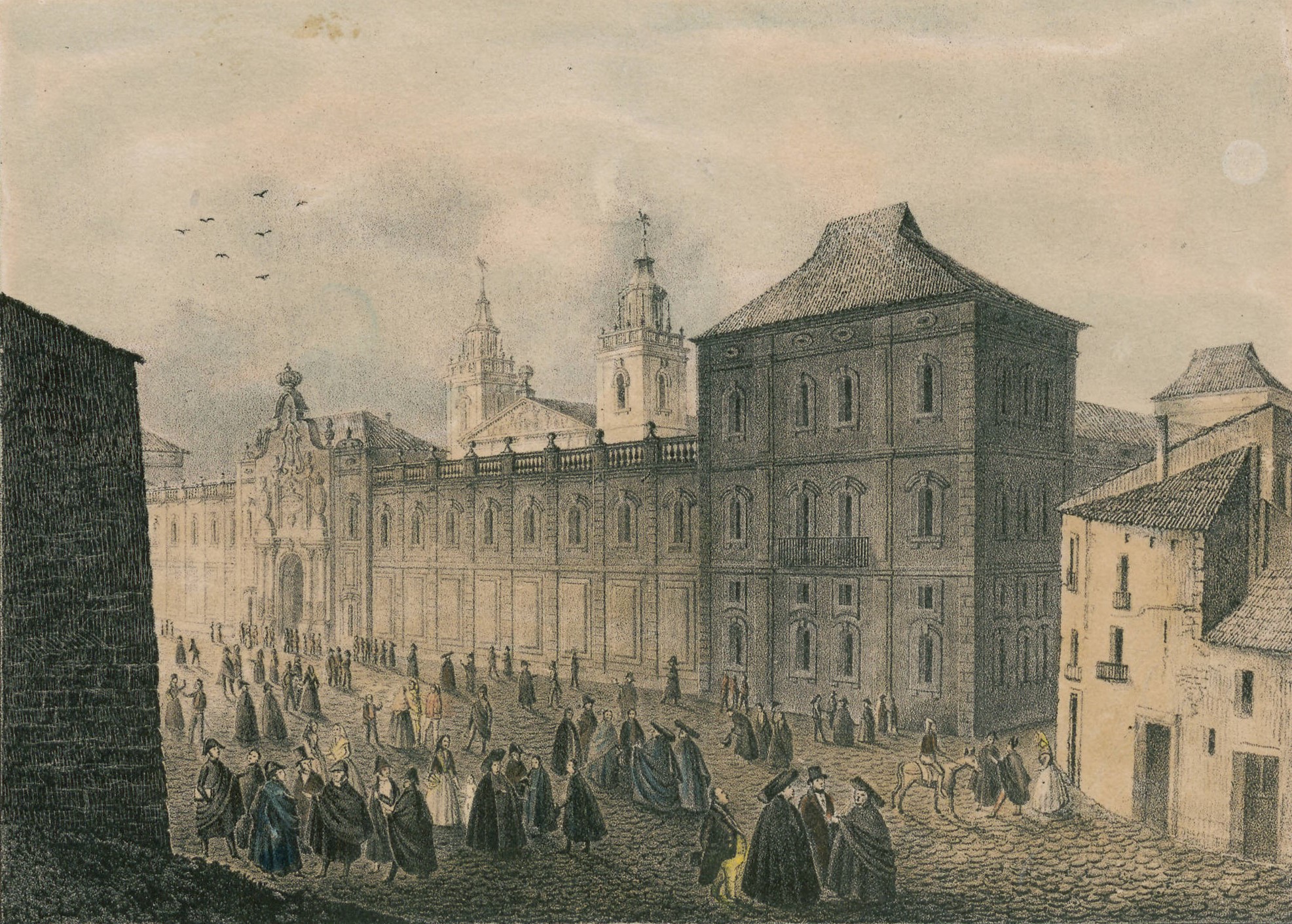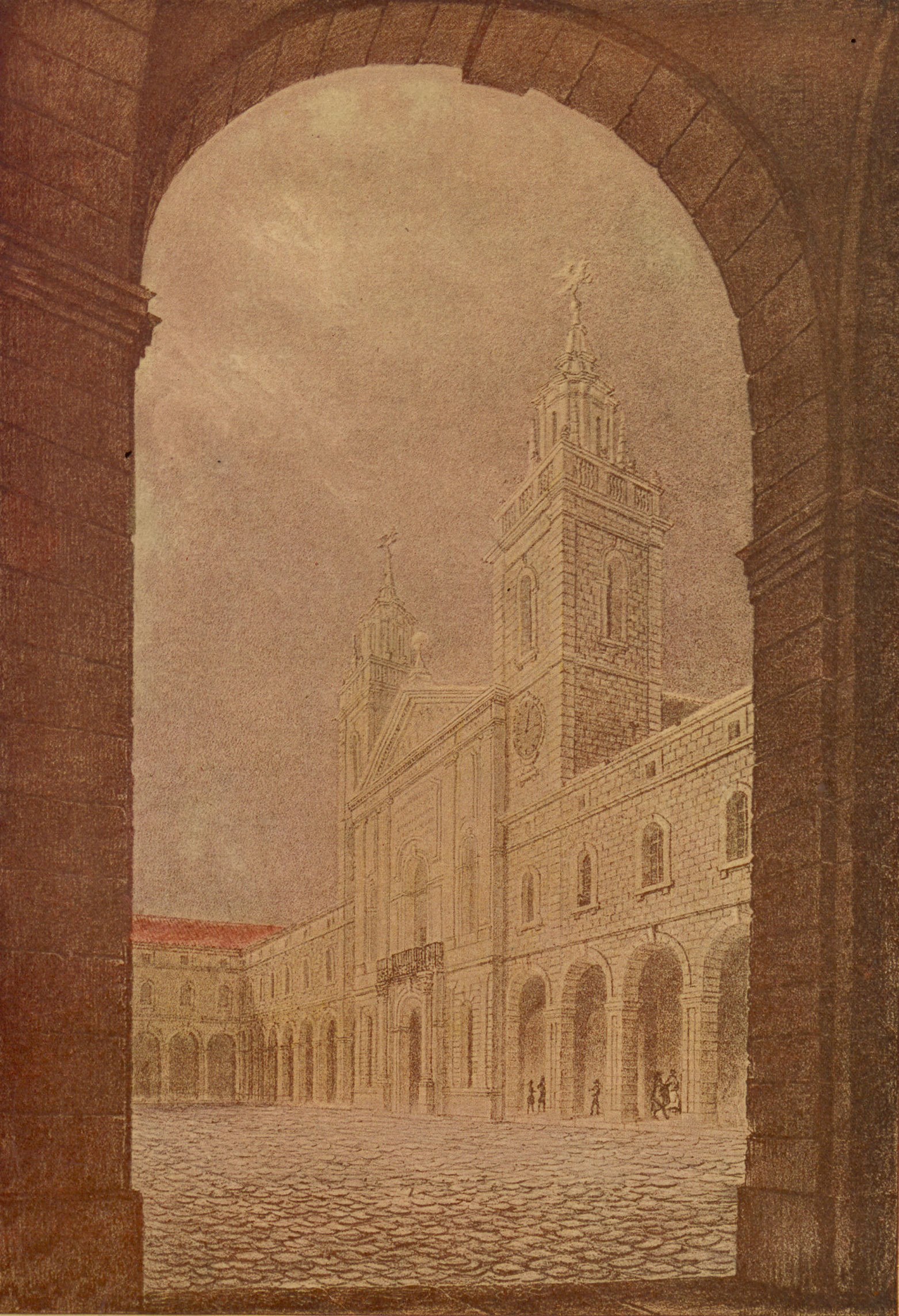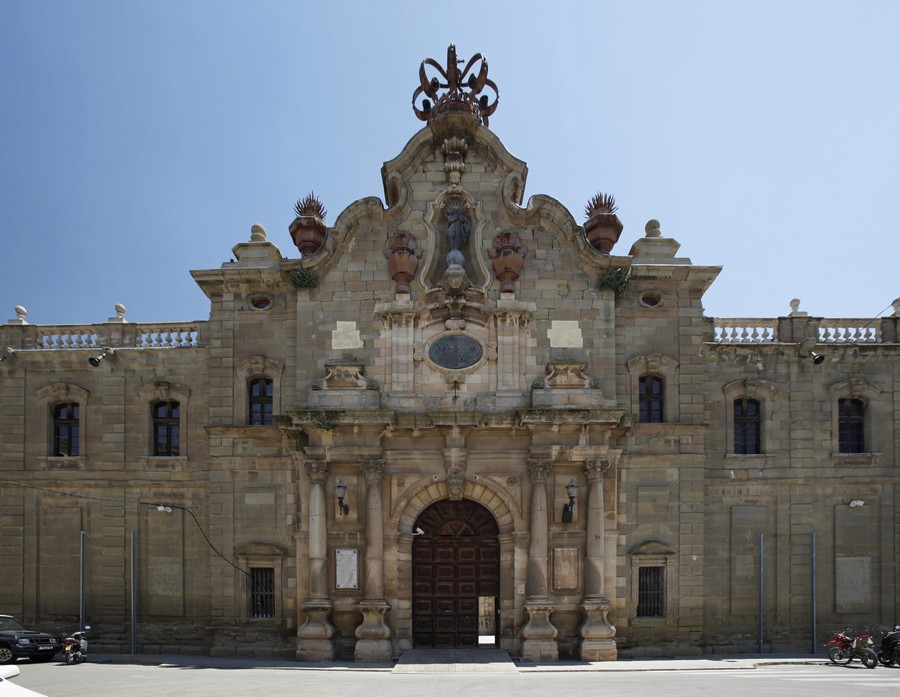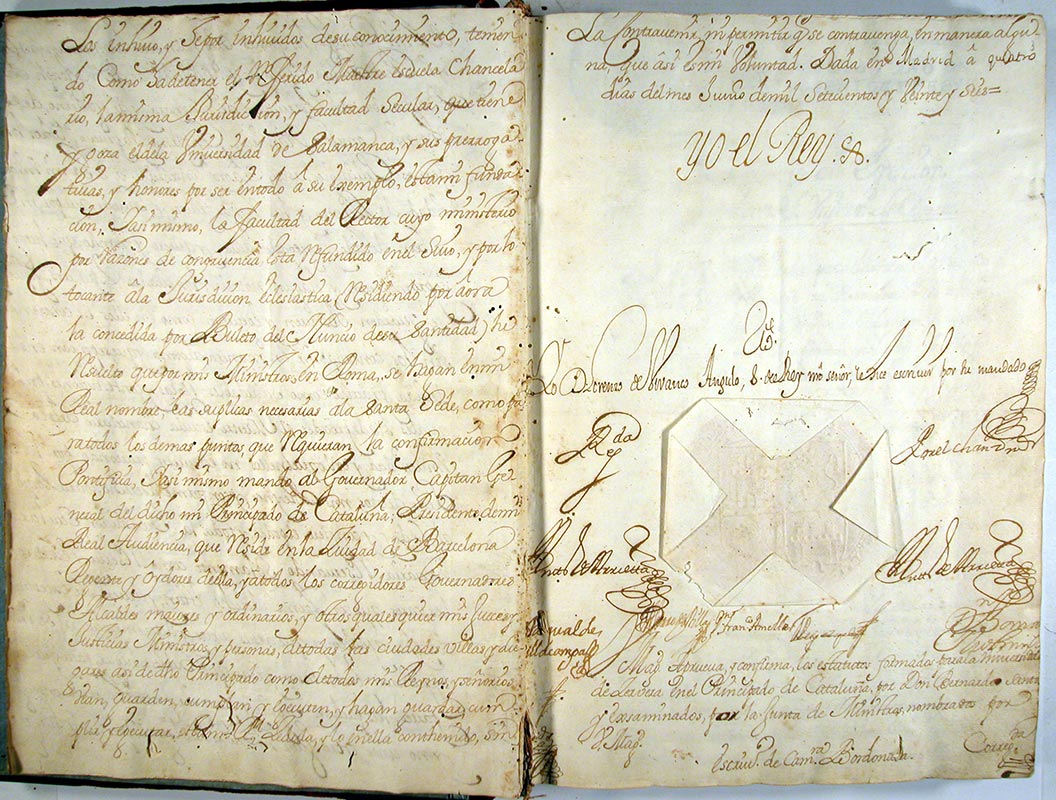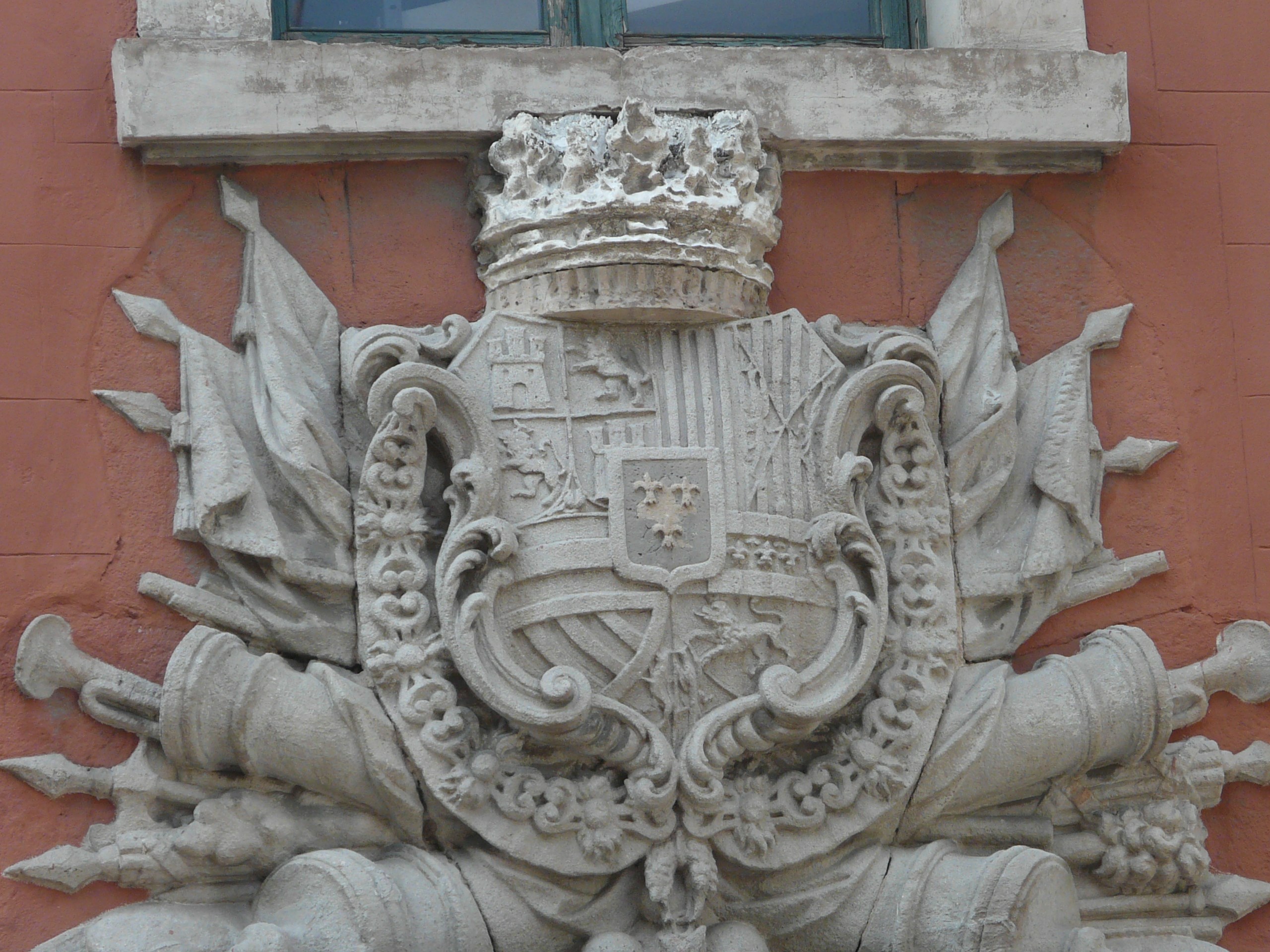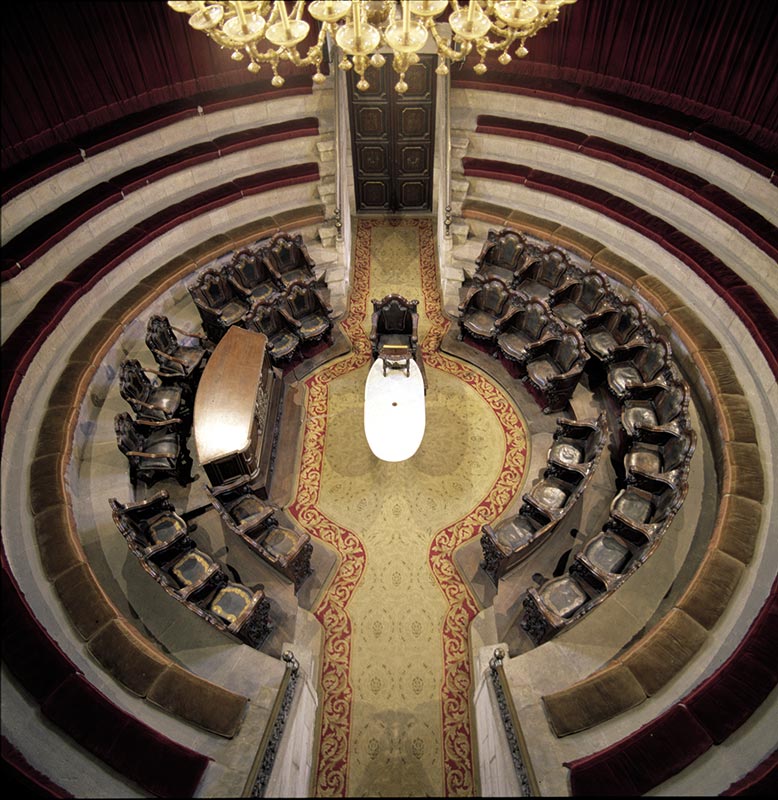
From the building in the Rambla to the University of Cervera
The first Municipal Ordinances governing the new institution – the Barcelona Estudi General, set up in 1450 – were issued in 1508. Some years later, on 18 October 1536, the first stone of the new Estudi General building was laid at the top end of La Rambla, in the stretch known today as the Rambla dels Estudis. The main façade faced the sea and overlooked a square called the Plaça dels Bergants, which, from then on, was called the Plaça de l'Estudi. At the rear, the building rested on the city wall and its sides corresponded to what is now the junction between Carrer de La Canuda and Carrer de Santa Anna and the beginning of Carrer de Tallers. The works were directed by Tomàs Barsa. It was a two-storey building, including a chapel. On the outside, on the main façade, were the arms of the Emperor Charles V (King Charles I of Spain), the only piece of this building still preserved and now on display in the Paranymph Gallery of the current building in Plaça Universitat.
More information
Later, when the university use had been lost, this building in the Rambla ended up as a military barracks (the Quarter dels Estudis), until it was demolished in 1843 to build the Isabel II Gate, which remained until 1873.
In this new building in La Rambla academic activity went on normally despite financial difficulties and rows between lecturers. However, some of its teachers particularly distinguished themselves in their respective disciplines, such as Cosme Damià Hortolà, appointed Rector in 1643, who was outstanding in Greek, Hebrew and Theology and who attended the Council of Trent.
The centre did not become an Estudi General with all faculties until 1559, when full teaching activity was achieved. From then on, the Estudi General suffered a difficult period of decline (censorship of publications, a ban on foreign contacts and shortages of resources) aggravated by a situation of student unrest and violence. This led to the growth of the idea that it would be better to move university institutions outside urban centres. Part of the reason for the foundation of the University of Cervera was a result of this situation.
The foundation of the University of Cervera came from a small nucleus of advisers close to King Philip V in the context established by the end of the War of the Spanish Succession. This led to Philosophy, Canon Law and Law studies being moved to Cervera in 1714 (Medicine and Grammar, taught by the Jesuits, remained in Barcelona). Three years later, in 1717, the single University of Cervera was established by royal order, bringing the Estudi from Barcelona together with the ones that had existed in other Catalan cities (Lleida, Girona, Tarragona, Vic and Tortosa).
Although not all institutions linked to the Crown agreed with the move, other groups saw an opportunity in this. So, the Jesuits saw in the initiative a means of penetrating higher education, from which they had previously been excluded and, in fact, there was a notable Jesuit influence on the content taught until the order was expelled from the country (1767). The expulsion of the Jesuits, considered to be the great teachers of Cervera, led to a situation of decline. After this date, attempts were made to introduce some reforms, but the general context was very unfavourable: in addition to a shortage of financial resources, there were the struggle between ecclesiastical privileges and the Crown, the ideological differences between groups, and Barcelona's growing interest in recovering the university. Already, education centres had been founded there which would become very important for the city.
Of military origin, these centres were, firstly, the Barcelona Royal and Military Academy of Mathematics (1720-1803) – a pioneering institution in Europe – and, secondly, the Barcelona College of Surgery (1760-1843), which was of a much higher standard than the Medical School in Cervera. The Military College of Surgery is the direct predecessor of the University of Barcelona's Faculty of Medicine, opened in 1843.
The Board of Trade, which operated from 1769 to 1851, was very important for the city. Linked to the commercial bourgeoisie and the manufacture of indiana cloth, the Board set up professorial chairs providing education linked to such areas as trade, industry, agriculture, economics, art, and nautical studies that was of a far higher quality than the university courses in Cervera.



